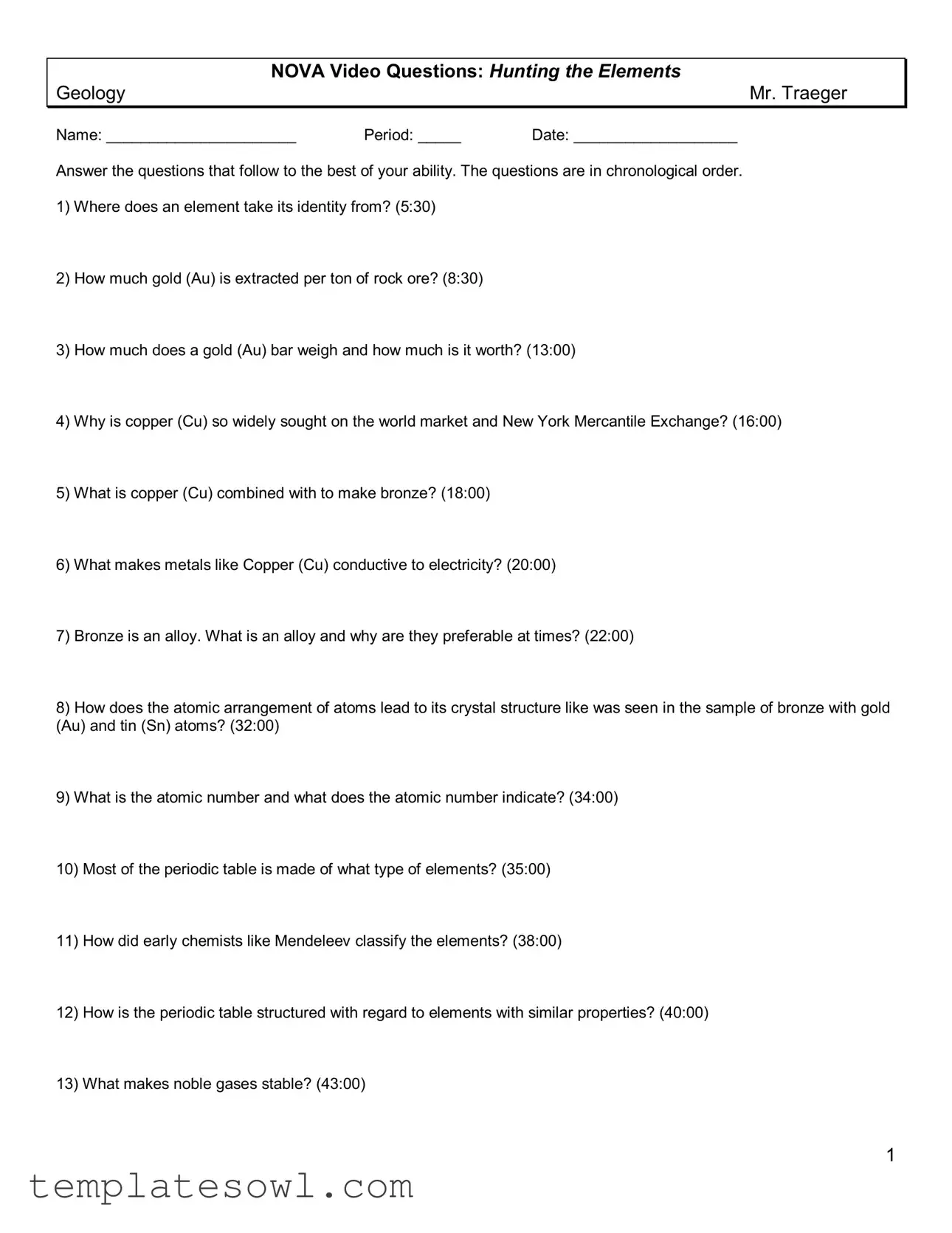What is the main purpose of the Nova Video Questions: Hunting the Elements form?
This form is designed to guide students as they watch the NOVA video on elements. It helps them focus on key concepts and questions that enhance their understanding of chemistry and geology. By answering the questions in order, students can reinforce their learning and engage more deeply with the content.
Can I use the form for other educational videos?
While the form is specifically tailored for the NOVA video "Hunting the Elements," you can adapt it for other educational videos. Simply modify the questions to fit the content of the new video. This approach can help maintain a consistent learning process across different topics.
What should I do if I don't know the answer to a question?
If you’re unsure about an answer, don't worry! It's a great opportunity to research or discuss the topic with classmates or teachers. Use the video as a guide and look for clues in the content. Collaboration can often lead to better understanding.
Is there a time limit for completing the questions?
No, there isn't a strict time limit. It's more important to grasp the concepts than to rush. Take your time to watch the video and reflect on each question. This way, you can provide thoughtful answers that showcase your understanding.
How should I submit the completed form?
Submission details typically depend on your teacher's instructions. You might need to turn it in physically in class or submit it electronically via email or a learning management system. Make sure to follow the guidelines provided by your instructor.
Are there any penalties for incorrect answers?
Generally, the focus is on learning rather than scoring. Making mistakes is a natural part of the learning process. If you do get something wrong, use it as a stepping stone to deepen your understanding. Teachers often appreciate effort and engagement more than just correct answers.
Can I discuss the questions with my classmates?
Absolutely! In fact, discussing the questions with peers can lead to richer insights. It encourages teamwork and allows you to hear different perspectives. Just ensure that you also put your own thoughts down on the form.


